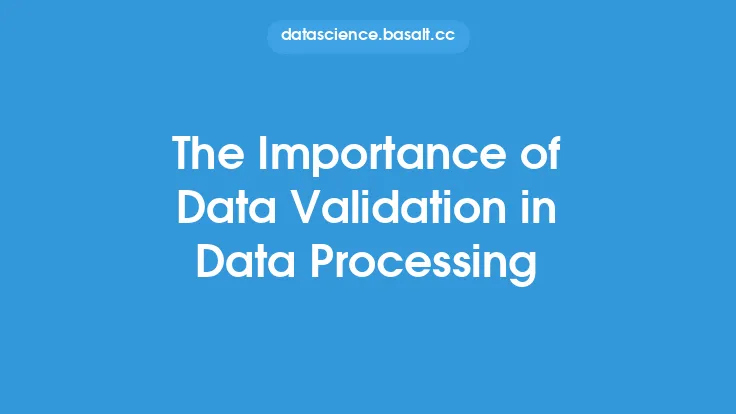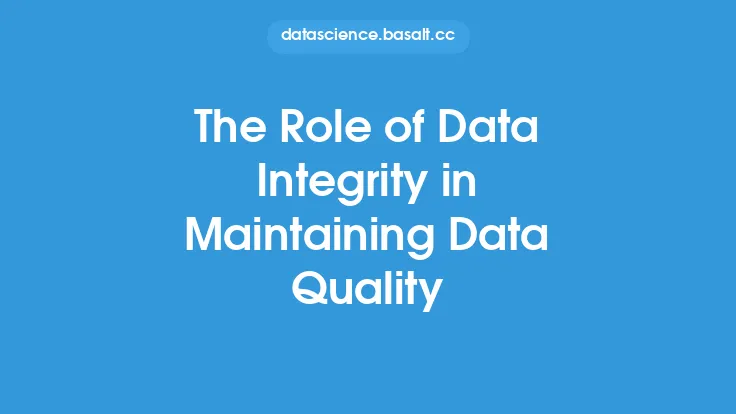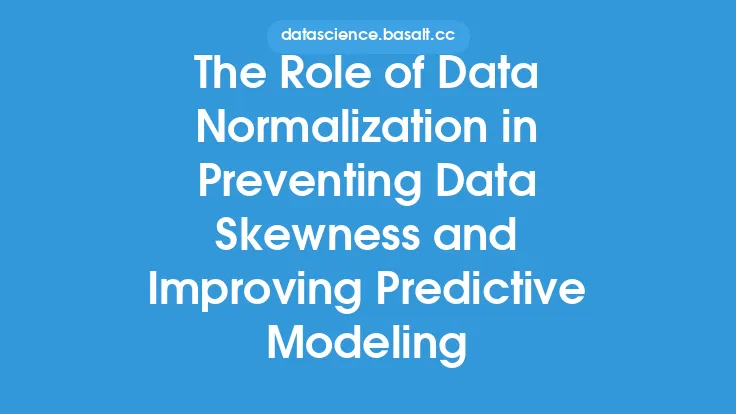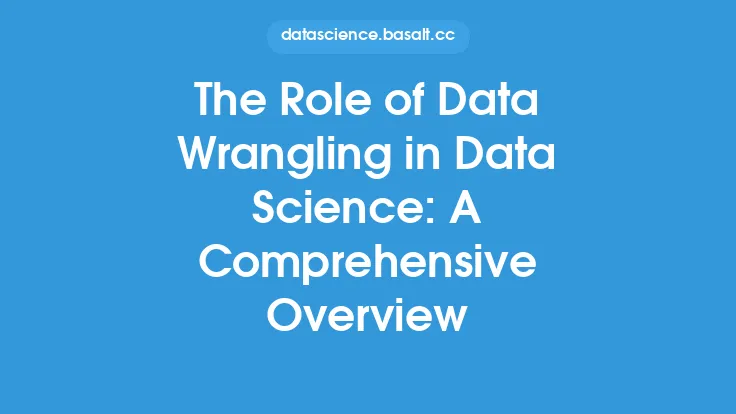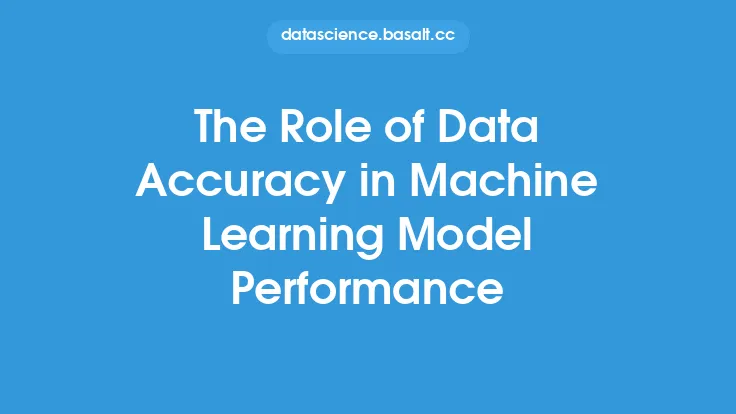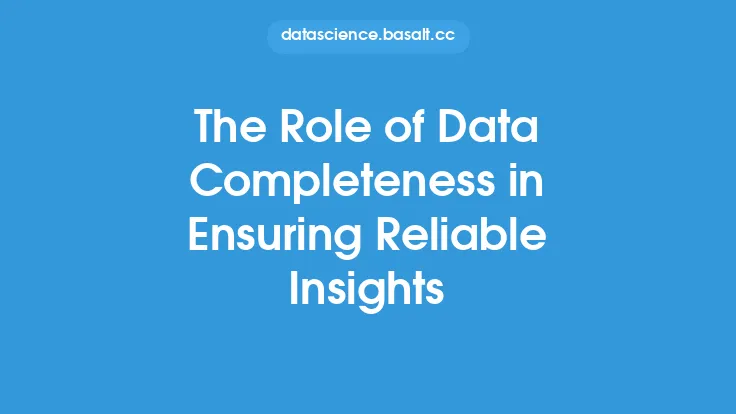Data validation is a critical process in ensuring the accuracy, completeness, and consistency of data. It involves checking data for errors, inconsistencies, and inaccuracies, and taking corrective action to prevent these errors from affecting downstream processes. In the context of data quality, data validation plays a vital role in preventing data errors, which can have significant consequences on business decision-making, operations, and reputation.
Introduction to Data Validation
Data validation is an essential step in the data processing pipeline, as it helps to ensure that data is accurate, complete, and consistent. It involves verifying data against a set of predefined rules, constraints, and formats to detect errors, inconsistencies, and inaccuracies. Data validation can be performed at various stages of the data processing pipeline, including data entry, data transfer, and data storage. The goal of data validation is to prevent data errors from occurring, rather than detecting and correcting them after they have occurred.
Types of Data Validation
There are several types of data validation, including syntax validation, semantic validation, and structural validation. Syntax validation checks data for formatting errors, such as invalid dates, phone numbers, or email addresses. Semantic validation checks data for meaning and context, such as checking if a value is within a valid range or if a code is valid. Structural validation checks data for consistency and completeness, such as checking if all required fields are filled in or if data is consistent across multiple tables.
Data Validation Techniques
Data validation techniques can be categorized into two main types: manual and automated. Manual data validation involves manually checking data for errors and inconsistencies, which can be time-consuming and prone to human error. Automated data validation, on the other hand, uses software tools and algorithms to validate data, which can be faster and more accurate. Automated data validation techniques include data profiling, data quality metrics, and data validation rules.
Data Validation Rules
Data validation rules are predefined conditions that are used to validate data. These rules can be based on business requirements, industry standards, or regulatory requirements. Data validation rules can be simple or complex, depending on the type of data being validated. For example, a simple data validation rule might check if a date is in the correct format, while a complex rule might check if a value is within a valid range based on a set of predefined conditions.
Data Validation and Data Quality
Data validation is closely tied to data quality, as it helps to ensure that data is accurate, complete, and consistent. Data quality is a critical aspect of data management, as it affects the reliability and trustworthiness of data. Poor data quality can lead to incorrect business decisions, operational inefficiencies, and reputational damage. Data validation helps to prevent data errors, which can have significant consequences on data quality.
Benefits of Data Validation
The benefits of data validation are numerous. It helps to prevent data errors, which can save time and resources in the long run. It also helps to improve data quality, which can lead to better business decision-making and operational efficiency. Additionally, data validation can help to reduce the risk of data breaches and cyber attacks, as it helps to detect and prevent invalid or malicious data from entering the system.
Challenges of Data Validation
Despite the importance of data validation, there are several challenges associated with it. One of the main challenges is the complexity of data validation rules, which can be difficult to define and implement. Another challenge is the volume and variety of data, which can make it difficult to validate data in real-time. Additionally, data validation can be resource-intensive, requiring significant time and effort to implement and maintain.
Best Practices for Data Validation
To overcome the challenges of data validation, it is essential to follow best practices. One of the best practices is to define clear and concise data validation rules, which are based on business requirements and industry standards. Another best practice is to use automated data validation tools, which can help to improve the efficiency and accuracy of data validation. Additionally, it is essential to test and validate data validation rules regularly, to ensure that they are working correctly and effectively.
Conclusion
In conclusion, data validation is a critical process in ensuring the accuracy, completeness, and consistency of data. It involves checking data for errors, inconsistencies, and inaccuracies, and taking corrective action to prevent these errors from affecting downstream processes. By understanding the types of data validation, data validation techniques, and data validation rules, organizations can improve the quality of their data and prevent data errors. Additionally, by following best practices for data validation, organizations can overcome the challenges associated with data validation and ensure that their data is accurate, complete, and consistent.
